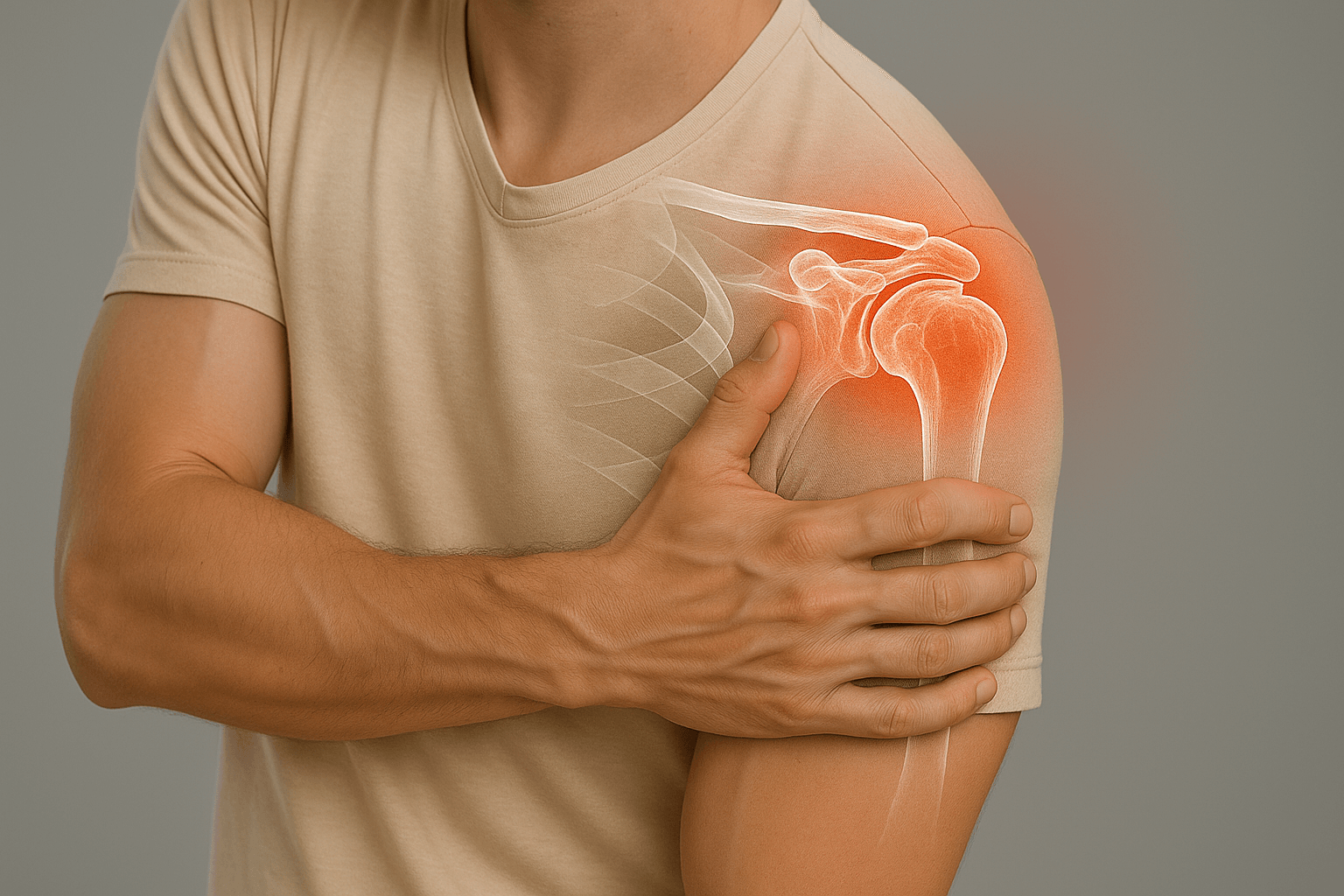Subacromial Impingement
Subacromial impingement corresponds to excessive and abnormal friction between the rotator cuff tendons and the acromion. This frequent pathology requires specialized management to avoid evolution towards tendon lesions.

What is subacromial impingement?
Subacromial impingement corresponds to excessive and abnormal friction between the rotator cuff tendons and the acromion (acromial bone). By extension, friction can also occur with the outer quarter of the clavicle or the coraco-acromial ligament located in the extension of the acromion.
The manifestations of this subacromial impingement most often occur during anterior or lateral arm elevation movements. Chronic irritation and friction of the tendons within the subacromial space can lead to tendon lesions or bursitis phenomena.
Types of subacromial impingement

Primary conflict (bony)
In this case, it is the shape of the subacromial vault (aggressive) that will directly come to rub against the rotator cuff tendons.
The shape of the acromial bone is classified into three categories according to Bigliani:
- Type I: Flat acromion (~17%)
- Type II: Curved acromion (~43%)
- Type III: Hooked acromion (~40%) — the most conflict-producing

Secondary conflict (muscular)
In this case, subacromial impingement comes from muscular deficiency. There is a desynchronization of the different shoulder muscles, preventing normal mobilization and physiological sliding between tendons and subacromial bone.
Most often there is an anterior displacement as well as an elevation of the shoulder within the joint. It is this decentering and imbalance of the shoulder that will be responsible for subacromial impingement.
Symptoms and manifestations

Pain
Pain is the main symptom of subacromial impingement. It is most often inflammatory pain, which will be nocturnal and may cause insomnia.
Pain may also cause nocturnal awakenings especially when turning on the affected shoulder. Sometimes pain is rather morning with unlocking phenomenon.
Triggering phenomenon: It is the arm elevation movements that will stimulate or trigger painful phenomena, often from 80° or 90° with sensation of catching or audible cracking.

Functional impairment
Functional impairment corresponds to an inability to normally mobilize the affected limb. In the context of subacromial impingement, it is most often a functional discomfort rather than true impairment.
A temporary and transient picture of paralyzed shoulder or "dead arm" may also appear, with total inability to actively mobilize the shoulder. This situation most often occurs after prolonged activity with the arm in the air.
Lack of strength: In some cases, functional impairment will manifest as a lack of strength corresponding to difficulty or impossibility of performing movements against resistance.
Diagnosis and evaluation
Clinical examination
The clinical examination will find signs of subacromial impingement more or less marked. Several clinical tests will allow to detect signs in favor of subacromial impingement:
- Neer maneuver
- Yocum test
- Hawkins test
- Gerber test
Typically, passive shoulder mobilization should be preserved even if active mobilization is limited or painful.
Imaging examinations

X-ray
Routine examination to evaluate bone structures and visualize acromial shape (Bigliani)

Ultrasound
Minimally invasive examination to explore tendon structures and look for signs of bursitis

Arthro-CT/MRI
Reference examination to specify conflict and associated lesions (transfixing or not)
Therapeutic options
Rehabilitation and physiotherapy

Physiotherapy has a fundamental role in the background treatment of subacromial impingement, whether there has been surgical intervention or not. Chronic shoulder pain tends to create diffuse muscle contractures of peri-scapular muscles.
Physiotherapy principles:
- Massages: Muscle relaxation to avoid reactive contractures
- Cryotherapy: Analgesic and anti-inflammatory role
- Mobilization: Work of decompression and stretching of subacromial space
- Recentering: Work of shoulder recentering and decompression
Self-physiotherapy:
Self physiotherapy corresponds to all active or passive mobilization activities that the patient will be able to perform by himself. The goal is not to substitute for classic physiotherapy sessions but it is a fundamental complement.
Principles: Work without pain, very regular work (5 minutes 5x per day), work guided by the physiotherapist.
Possible complications
Infection
Hemorrhage/hematoma
Nerve lesion
Painful recurrence
Tendinitis/bursitis
Complex regional pain syndrome
Practical information
Hospitalization
0 to 2 days (outpatient)
Anesthesia
General
Immobilization
15 days to 1 month
Physiotherapy
2 to 3 months
Control
1 month



